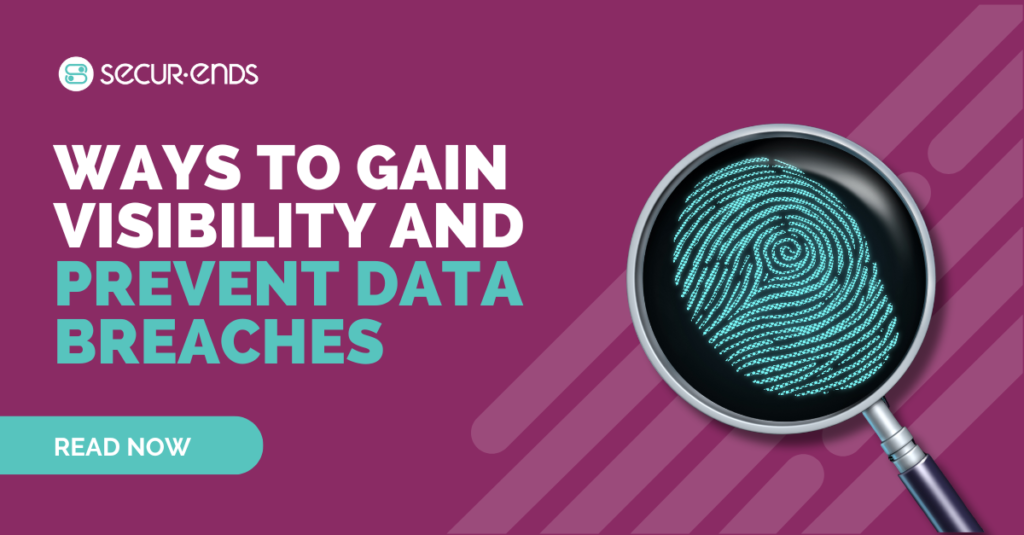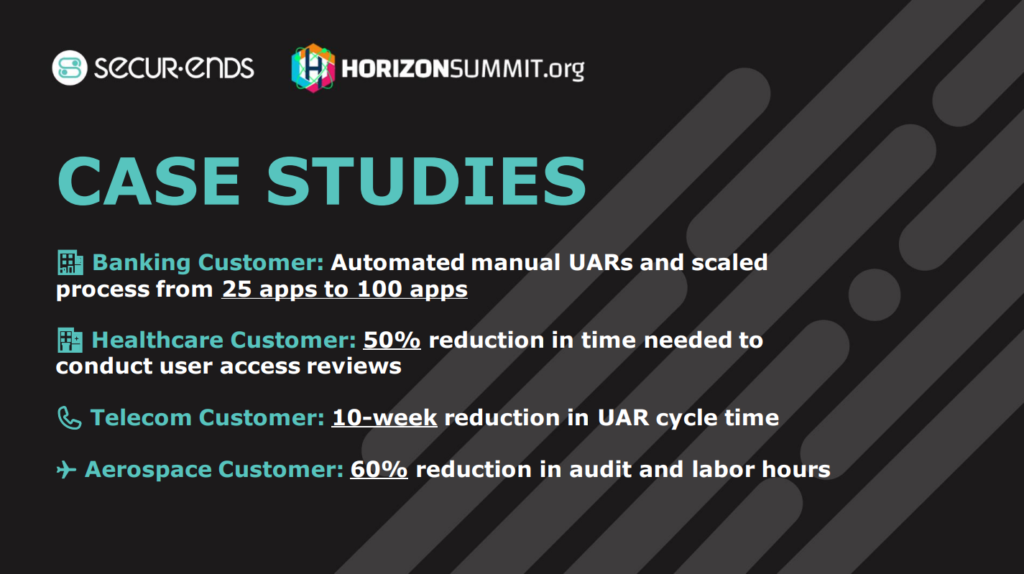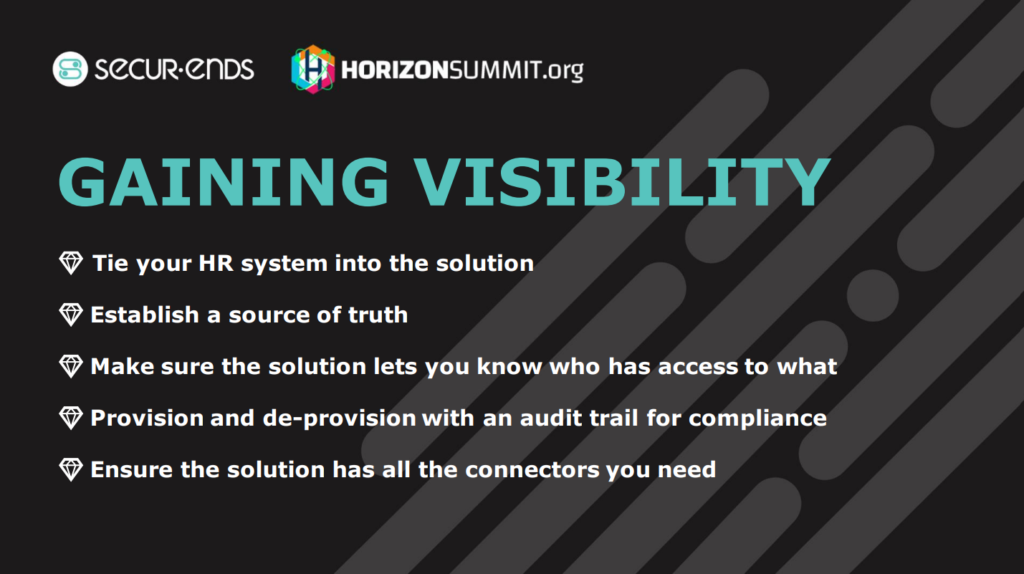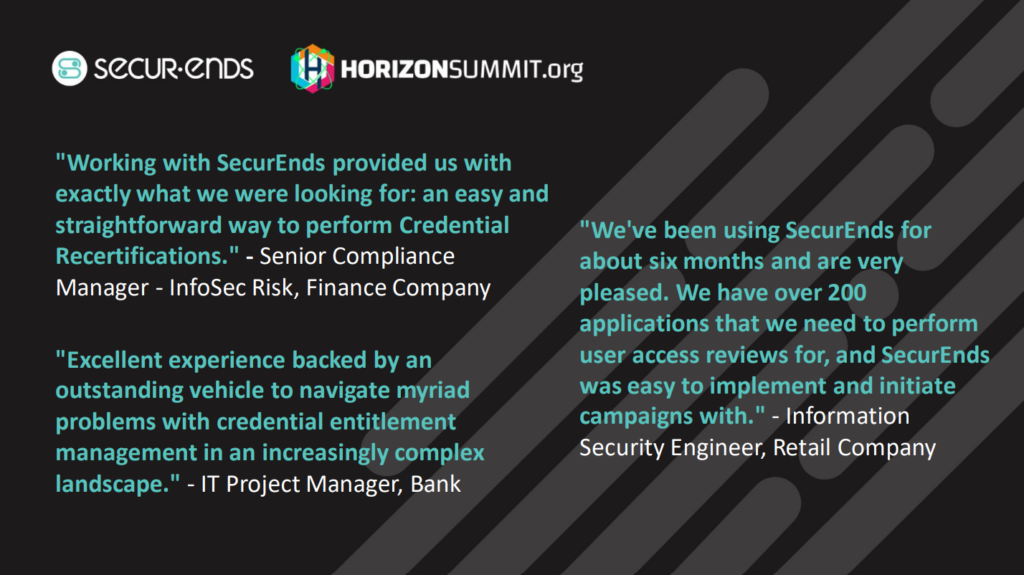13 Ways Cybersecurity & Compliance Teams Can Gain Visibility [Prevent Data Breaches]
13 Ways Cybersecurity & Compliance Teams Can Gain Visibility [Prevent Data Breaches]

Gaining comprehensive visibility into your IT environment is the cornerstone of an effective defense strategy. So, where do you start?
In this article, we’ll delve into several powerful methods that will empower your cybersecurity and compliance teams to enhance visibility, detect potential risks early, and thwart data breaches before they can inflict irreparable damage. Be sure to check out our webinar with Horizon Media to learn more about this topic from CISO Charles Payne and CEO Tippu Gagguturu. Let’s explore these essential strategies together and fortify your organization’s security posture for the challenges ahead. But before we get into that, let’s look at why visibility is so important in the first place.
Why is visibility key for cybersecurity and compliance?
Visibility is crucial for cybersecurity and compliance because it provides your organization with the ability to monitor, analyze, and understand your network, systems, and data activities effectively. The lack of visibility can leave you vulnerable to cyber threats and non-compliance with various regulations. Here are some key reasons why visibility is so important:
- 🔑 Threat Detection and Response: Monitor your networks and systems in real-time to detect and respond to security incidents promptly. By analyzing network traffic and system logs, your security team can identify potential security breaches, malware infections, or suspicious activities that may indicate an ongoing cyber-attack. With early detection, you can take swift action to mitigate the impact of the threat.
- 🔑 Identifying Anomalies: Establish baselines for normal behavior across your IT environment. When anomalies occur—such as unusual data access, login attempts from unknown locations, or abnormal system behavior—your security team can quickly spot them and investigate the cause. Anomalies can be indicative of security breaches or potential compliance violations.
- 🔑 Monitoring Insider Threats: These can pose significant risks to your security and compliance. Having visibility into user activities and data access helps identify any suspicious behavior by employees or authorized users who might be abusing their privileges or accessing sensitive information without authorization.

- 🔑 Compliance Requirements: Many industry regulations and data protection laws mandate specific security measures and reporting standards to safeguard sensitive data. Organizations must maintain visibility to demonstrate compliance with these requirements. Regular monitoring and audit trails can help prove that the necessary security controls are in place and that access to sensitive data is appropriately restricted and logged.
- 🔑 Incident Investigation and Forensics: Detailed logs and monitoring data can help reconstruct the timeline of events leading up to the incident, identify the attack vector, and assess the extent of the damage. This information is crucial for determining the appropriate response and preventing future incidents.
- 🔑 Proactive Security Measures: Analyzing historical data and trends can help organizations identify potential vulnerabilities and weaknesses in their systems and networks, allowing them to take preemptive actions to strengthen their security posture.
- 🔑 Third-Party Risk Management: Many organizations work with third-party vendors and partners, and they need visibility into these relationships to manage the associated risks properly. Understanding the security practices of third parties is essential to ensure that they adhere to the required cybersecurity and compliance standards.
Overall, visibility provides organizations with the knowledge and awareness necessary to maintain a strong cybersecurity posture, meet regulatory requirements, and protect sensitive information from cyber threats. It empowers security teams to make informed decisions, respond effectively to incidents, and prevent potential breaches or compliance violations. But if it’s so valuable, then why is visibility so often ignored as a strategy?
Why is visibility such a weak point for so many organizations?
Addressing these weaknesses is incredibly important — your organization needs to adopt a proactive approach and invest in integrated security solutions, advanced monitoring tools, and skilled cybersecurity personnel in order to do so. The reason why visibility continues to be challenge for many is due to several factors, including:
- ❗ Complexity of IT Environments: Modern organizations often have complex and heterogeneous IT environments with a wide range of interconnected systems, applications, and cloud services. Managing and monitoring this diverse infrastructure can be challenging, leading to blind spots and gaps in visibility.
- ❗ Lack of Integrated Tools and Solutions: Organizations may use multiple security tools and solutions, often from different vendors, which may not be well-integrated. This fragmented approach can result in data silos and make it difficult to gain a holistic view of the entire IT environment.
- ❗ Resource Constraints: Smaller organizations may have limited resources and budgets for cybersecurity, making it challenging to invest in comprehensive visibility solutions and skilled personnel to manage them effectively.
- ❗ Legacy Systems and Technologies: Some organizations continue to rely on legacy systems and applications that may lack built-in logging and monitoring capabilities. Retrofitting such systems for modern visibility requirements can be complicated and costly.
- ❗ Data Overload: With the increasing volume of security logs and event data generated by various systems, organizations may struggle to process, analyze, and make sense of all the information. This can lead to important security events being overlooked amidst the noise.
- ❗ Lack of Cybersecurity Expertise: There is a global shortage of skilled cybersecurity professionals. Many organizations struggle to find and retain qualified cybersecurity experts who can effectively set up, manage, and monitor visibility solutions.
- ❗ Misconfigured or Inadequate Tools: Even when organizations have visibility tools in place, they may not be optimally configured, resulting in limited effectiveness. In some cases, default settings may be insufficient to capture critical security events.
- ❗ Cloud and Third-Party Services: As organizations move their services to the cloud and rely on third-party providers, visibility challenges can arise. Cloud environments may require different monitoring approaches, and third-party providers may not always offer the desired level of transparency.
- ❗ Cultural and Organizational Challenges: Lack of awareness about the importance of visibility, resistance to change, or a reactive security culture can hinder organizations from prioritizing and investing in robust visibility practices.
- ❗ Regulatory and Compliance Burden: Meeting compliance requirements can be demanding, and organizations may focus on achieving compliance rather than implementing proactive visibility measures.
You should also prioritize security awareness and training programs to ensure that employees understand the significance of visibility in safeguarding their organization’s assets and data. Additionally, implementing best practices for managing and analyzing security data can help your organization make better use of the information it collects, allowing your team to identify and respond to potential threats effectively.
What happens when your organization has poor visibility?
Poor visibility in terms of cybersecurity and compliance can have severe consequences for your organization. Without the ability to monitor, analyze, and understand their IT environment effectively, you may face the following risks:
- 🚨 Increased Cybersecurity Incidents: Poor visibility makes it difficult to detect and respond to cyber threats in a timely manner. As a result, organizations may experience more successful cyber-attacks, leading to data breaches, financial losses, and reputational damage.
- 🚨 Data Breaches and Loss of Sensitive Information: Lack of visibility into data access and movement can result in data breaches. In 2020, the average cost of a data breach was $3.86 million, according to IBM’s Cost of a Data Breach Report. Organizations with poor visibility may be more vulnerable to data exfiltration and other data-related incidents.
- 🚨 Regulatory Non-Compliance: Many industry regulations, such as the General Data Protection Regulation (GDPR) and the Health Insurance Portability and Accountability Act (HIPAA), require organizations to maintain certain security measures and demonstrate compliance through auditing and reporting. Poor visibility may lead to non-compliance, subjecting the organization to fines and legal penalties.
- 🚨 Loss of Intellectual Property and Competitive Advantage: In industries where intellectual property is a valuable asset, poor visibility can lead to the theft of proprietary information, designs, or trade secrets. This can erode the organization’s competitive advantage and market position.
- 🚨 Reputation Damage and Customer Trust Loss: High-profile cybersecurity incidents can severely damage an organization’s reputation and erode customer trust. Customers may lose confidence in the organization’s ability to safeguard their data, leading to loss of business and potential customer churn.
- 🚨 Insider Threats: Poor visibility may make it challenging to detect insider threats, such as employees or contractors misusing their access privileges. A lack of monitoring can enable malicious insiders to go undetected for extended periods, causing significant harm to the organization.
These are just a few of the many consequences your organization could face if visibility isn’t treated as a top priority. Remember, these aren’t just theoretical – they happen on a daily basis. Next, we’ll look at some real-life examples that prove this.
Real examples of data breaches caused by poor visibility
There are too many instances to name where companies faced severe financial and reputational losses as a result of not knowing who has access to what within their own networks. Here are some of the most notable examples:
- 👉 Equifax Data Breach (2017): Equifax, one of the major credit reporting agencies, suffered a massive data breach in 2017, compromising the personal information of approximately 147 million people. The breach was caused by a vulnerability in an application software, which went undetected due to poor visibility and weak patch management. The consequences included a settlement cost of over $575 million and significant damage to Equifax’s reputation.
- 👉 Capital One Data Breach (2019): In 2019, a former Amazon Web Services (AWS) employee exploited a misconfigured web application firewall to gain unauthorized access to Capital One’s systems. The breach exposed the personal information of more than 100 million customers. The incident highlighted the importance of visibility in identifying and addressing configuration weaknesses.
- 👉 General Data Protection Regulation (GDPR) Fines: Several organizations have faced substantial fines under GDPR due to non-compliance with data protection requirements. For example, British Airways and Marriott International were fined £20 million and £18.4 million, respectively, in 2020 for failing to protect customer data adequately.
These examples illustrate how poor visibility can lead to significant cybersecurity incidents, data breaches, regulatory fines, and reputational damage. To mitigate these risks, organizations must prioritize and invest in enhanced visibility measures, comprehensive monitoring solutions, and robust cybersecurity practices.
How do I enhance visibility?
Enhancing visibility is essential for organizations to strengthen their cybersecurity posture and improve compliance efforts. Here are some steps you can take to enhance visibility at your organization:
- 🔍 Comprehensive Network Monitoring: Implement network monitoring tools that provide real-time visibility into network traffic, device activities, and communication patterns. This includes monitoring both on-premises and cloud environments. Network monitoring helps identify anomalies and potential security threats.
- 🔍 Centralized Logging and Log Management: Centralize logs from various systems, applications, and security tools in a centralized log management system or Security Information and Event Management (SIEM) platform. This allows security teams to correlate and analyze data from different sources for a holistic view of the security landscape.
- 🔍 Asset Inventory and Management: Maintain an up-to-date inventory of all assets, including hardware, software, and cloud services. Regularly scan the network to discover new devices and ensure that all assets are correctly configured and secured.
- 🔍 Endpoint Visibility: Employ endpoint detection and response (EDR) solutions that monitor and collect data from endpoints (e.g., laptops, desktops, mobile devices). Endpoint visibility helps detect and respond to security incidents that may originate from or affect individual devices.
- 🔍 Cloud Visibility: Leverage cloud-native monitoring and logging services to gain visibility into cloud environments. Cloud providers offer various tools to monitor resource utilization, network traffic, and user activities within their platforms.
- 🔍 User Activity Monitoring: Implement user activity monitoring solutions to track and analyze user behavior across systems and applications. This helps identify potential insider threats and unauthorized access to sensitive data.

- 🔍 Threat Intelligence Integration: Integrate threat intelligence feeds into security monitoring systems to enhance threat detection. Threat intelligence provides information on the latest known threats and can help identify potential malicious activities.
- 🔍 Regular Security Audits and Penetration Testing: Conduct regular security audits and penetration testing to identify vulnerabilities and assess the effectiveness of existing security controls. These activities provide valuable insights to improve visibility and overall security.
- 🔍 Security Awareness Training: Educate employees about the importance of visibility in cybersecurity and compliance efforts. Encourage a security-conscious culture and teach employees how to recognize and report potential security incidents.
- 🔍 Automated Incident Response: Implement automated incident response capabilities that can trigger immediate actions when security incidents are detected. This can help contain threats quickly and reduce response times.
- 🔍 Data Loss Prevention (DLP): Deploy DLP solutions to monitor and prevent sensitive data from being leaked or mishandled. DLP helps maintain data visibility and compliance with data protection regulations.
- 🔍 Collaboration and Communication: Foster collaboration and communication between IT, security, and compliance teams. A cross-functional approach ensures that everyone works together to enhance visibility and address security challenges effectively.
- 🔍 Regular Security Training and Skill Development: Invest in continuous training and skill development for cybersecurity personnel to keep them updated with the latest security trends, tools, and techniques.
Remember that enhancing visibility is an ongoing process. Every organization must regularly review and update their visibility strategies to adapt to evolving threats and technological advancements. Additionally, monitoring and logging practices should align with your specific security and compliance requirements.
Why choose SecurEnds for Identity Governance?

Gaining visibility for cybersecurity and compliance teams is not just a goal; it’s absolutely required for organizations seeking to protect themselves from the ever-present dangers of data breaches. By implementing the essential strategies we’ve explored in this article, your team can bolster their capabilities to detect, respond, and mitigate potential risks effectively.
However, to truly stay ahead of the evolving threat landscape, you must embrace the benefits of automation in gaining visibility. An automated solution such as SecurEnds for identity governance and access management streamlines processes, minimizes human errors, and provides real-time insights into access rights and activities.
This level of automation empowers you to enforce least privilege principles, adaptively control access based on contextual factors, and proactively respond to potential threats. By embracing automation, you can achieve heightened visibility, fortify your security defenses, and ultimately prevent data breaches, ensuring a safer digital landscape for both your organization and valued stakeholders.
Schedule a meeting with us today to see how SecurEnds will help you achieve a rock-solid security and compliance posture while making your daily workload significantly easier.
✍ Article by Dino Juklo